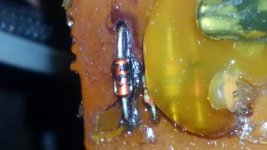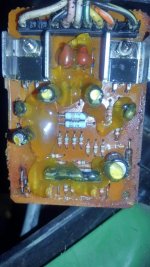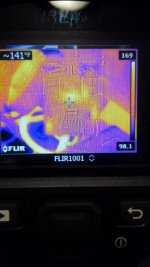dsergison
Diamond
- Joined
- Oct 23, 2003
- Location
- East Peoria, IL, USA
I have a Deere 425 with Kawasaki 2 twin. It's got ignition problems when it warms up after 5 min of mowing the left cylinder stops firing. I've read many threads that say it's corrosion inside this igniter module, but I don't see corrosion and It's all got a conformal coating. I do see one hot component in the lower left corner with some slightly cooked looking board around it. After I removed the housing and had the board in free air I never had a cylinder drop out. It ran all afternoon.
I'm not sure what the component is exactly to replace it. the markings are not clear to me. Zener diode? can I determine what one I need through testing voltage with multimeter?
a new module is about $200.
thanks



I'm not sure what the component is exactly to replace it. the markings are not clear to me. Zener diode? can I determine what one I need through testing voltage with multimeter?
a new module is about $200.
thanks





